
You may have heard of subitizing, especially if you teach preschool or kindergarten (you’ll also see it spelled subitising). What is Subitizing? Subitizing is the ability to instantly recognize the number of objects without counting.
I often think about subitizing as the flash words of math. Words that you have committed to memory no longer need to be sounded out. Like how you can read the word “six” in a flash without sounding out each letter: “s-i-ks.” Similarly, you likely read the word “aftermath” as “after” and “math.” You subitize all the time and probably don’t even realize it! Let’s look at some examples.
Examples of Subitizing
Say you are making sure each group of desks in your classroom has enough pencils. Each group has four desks so you need four pencils. When you look in the pencil basket you see three pencils sticking out. You likely just knew there were three and didn’t have to count “one, two, three” to figure out how many there were. That’s subitizing!
How about when you’re playing a board game with your family? When you roll the two dice playing Parcheesi (a classic!), I bet you don’t have to count the dots to know how many you rolled. You just know. That’s subitizing!

The Research on Subitizing
Research has shown that even infants can differentiate between quantities without any formal understanding of numbers. In fact, children who can subitize have a stronger math foundation. They are better able to identify amounts of objects in collections. They’re also better able to represent numbers and later add and subtract numbers.
Subitizing plays a huge role in students’ math growth so much so that many state standards, including New Jersey, Maryland, and Illinois, even include subitizing in their pre-k standards!
Two Types of Subitizing
There are two types of subitizing: perceptual subitizing and conceptual subitizing. Perceptual subitizing is the ability to just know how many objects without needing to count. Most people can subitize this way with five or fewer objects. Conceptual subitizing is a bit different because it involves seeing the amount in parts and then adding them.
Let’s go back to the two examples from earlier. The pencil example is perceptual subitizing. You could just see the pencils and know there were three. The example of rolling the dice is conceptual subitizing. You first had to know how many were on each die and then add them to know how many you rolled all together. That sounds like a lot of steps, but with subitizing, it all happens very quickly.
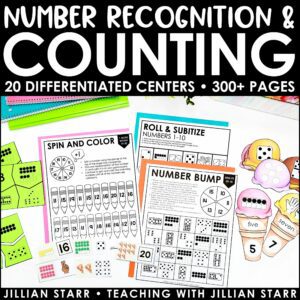
Subitizing and Counting Activities
Subitizing in 2nd and 3rd Grade
Subitizing is not just important in the lower grades though. In second grade, students may be working with base ten blocks. If they have four rods and three units in front of them, they could subitize the rods and the units and quickly know that there are 43.

In third grade when students are learning multiplication, they may see an image that shows three large circles. Inside each circle are two dots. Students who can subitize will be able to see the image for only seconds but be able to recall that they saw three groups of two or six.
You can see why subitizing is such a crucial skill and why we want students to grow their subitizing skills! In the next post, I’ll share some easy, low-prep subitizing activities you can do with your students to incorporate subitizing into your math lessons.
P.S. You may also be wondering how to say subitizing. It’s from the Latin word subitus, which means sudden. I pronounce it soo-bi-tize, but I’ve also heard people say suh-bi-tize. Either way, it’s a critical skill that’s also fun to practice!

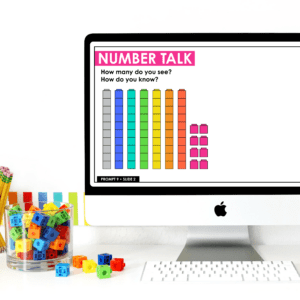




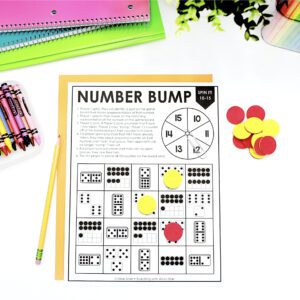
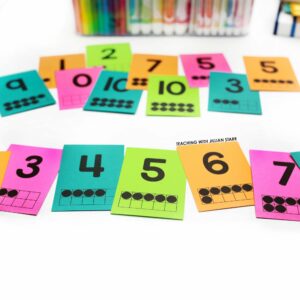
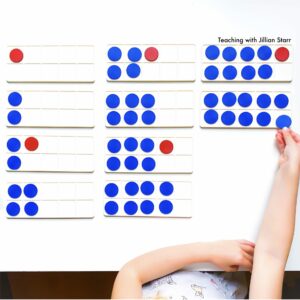


Leave a Comment